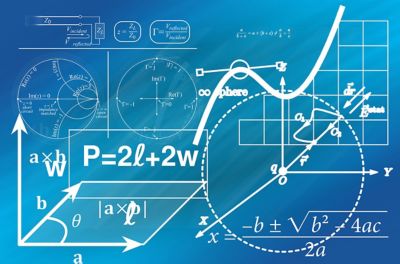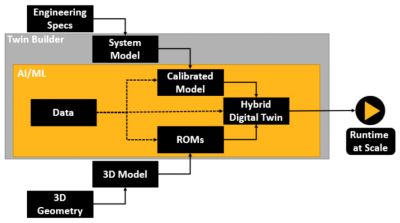ANSYS BLOG
September 1, 2022
Artificial Intelligence 101: It’s Math, Not Magic
The term artificial intelligence (AI) can be somewhat misleading. While the medium of intelligence is designed (and, in that sense, artificial or human-made), the intelligence itself is based on very real data. However, most people hear “AI” and think of futuristic robots or scenes from science fiction movies, not recognizing that the origin of AI is not fictional or magical — it’s mathematical.
Math and data are the core of AI and machine learning (ML) training methods. In this way, the process is not so distant from human-driven engineering projects. Still, AI has picked up a few critics along the way, largely based on a misunderstanding and subsequent mistrust for AI.
Coupled with this, there is a fear, and slight distaste, of the chance that AI-powered machines could someday replace humans in the workplace. But this is also a distorted version of what AI truly is or can be. AI contributes much more to the field of engineering than it could ever remove or replace.
The relationship between AI and engineering is more symbiotic and similar to the connection we see with simulation and AI, or simulation and engineering. Each relationship complements and enhances the other.
To clear up some of the misconceptions surrounding AI, let’s review some of the key ingredients to the AI process, how simulation fits in, and how both AI and simulation significantly benefit engineering.

Knowing the Facts: Simulation-Powered Data
The most critical part in AI-powered engineering is data. As previously mentioned, AI is essentially a lot of math, consisting of algorithms, calculations, and other types of data. This is the back end or behind-the-scenes training that most people don’t see. However, in the same way you must train your human teams, you must train your AI.
For humans in the workplace, this may come in the form of a training module or hands-on session with a senior member of the team. The training comes in a different form for AI, but there is still information-based training. The engineer trains the AI by feeding it the data it needs to perform the task at hand. As you may imagine, the accuracy in the data is critical for the same reasons you wouldn’t train a human using inaccurate information. Consequently, AI/ML integration is not a revolution, but an evolution of methods that is comparable to training an engineer or designer in a new design approach or workflow that generates better results.
One difference, though, is the sheer volume of data needed to fully prepare AI, especially because AI lacks the human elements of common sense or quick thinking. While this is another reason of hesitation for some, this is where simulation can lend a great deal of assistance with predictive accuracy, a large capacity for data, near-limitless analysis capabilities, and speedy results. For this reason, AI/ML integration with simulation is a critical building block in achieving full-scale AI engineering.
With simulation software spanning finite elements analysis (FEA), computational fluid dynamics (CFD), electromagnetics and other physics-based modeling, Ansys’ broad portfolio has the tools for seemingly any engineering project. By using these tools, engineers can collect the most accurate data possible and visualize how it will perform. Even more advantageous, Ansys removes the mathematical burden from the engineer or designer by simplifying calculations or coding techniques and encapsulating these tasks into built-in, easy-to-use tools. Today, simulation is much more approachable for the non-simulation expert.
Once the desired amount of data is collected, team members can turn toward simulation again for the next stage: training the AI. One method of training leverages digital twin technology, such as Ansys Twin Builder. A digital twin can be used in tandem with ML methods to generate large amounts of data to train AI much more quickly and at a lower cost than using physical machines for data generation.

Artificial intelligence plays a key role in hybrid digital twins.
According to the Digital Twin Consortium, a digital twin is a virtual representation of real-world entities and processes, synchronized at a specified frequency and fidelity. By creating digital twins with Twin Builder and integrating AI/ML, engineers can merge data- and physics-based models to create hybrid digital twins.
With hybrid digital twins, digital twin technology pairs with Ansys’ physics-based simulation to transport the details of 3D simulations — for example, structural analyses and mechanical models — into reduced-order models (ROMs), which reduces the computational complexity and produces more efficient system-level models with the same level of trusted accuracy.
Another benefit to AI/ML-based methods is its ability to make use of historical data. Typically, when a volume of data is collected, there is a responsibility to sort through that information to pull out what is most needed, what is less useful, and what should be discarded. The less useful or discarded historical data often gets stored away in old formats on computer hard drives, becoming mainly inaccessible and seemingly worthless. However, AI/ML thrives off a backlog of data and makes great use of them.
In fact, AI/ML can turn obsolete legacy data into a high-value asset. As mentioned earlier, it takes a lot of data (and math) to properly train AI. In this manner, AI/ML can benefit from unused or old data by recycling it to use as training material. Using past simulation results and data to learn and approach new design challenges is similar to leveraging the expertise of a team of senior designers, but with greater advantage.
This also helps sustainability concerns. Large volumes of data need to be stored, which uses power and energy unnecessarily — especially if the data is not being used. By employing AI/ML to sort through, consolidate, and use up old data, we can decrease power and energy consumption for the long term.
To expand on this, we can strive to create a data-hungry development framework with an open-platform where modern machine algorithms can regularly consume data and feed off of information from multiple sources.
Mutually Beneficial Connections
While AI benefits from simulation, simulation also benefits from AI. AI can accelerate simulation up to 100 times faster, as we see with AI-powered simulations or simulations using ML-based systems.
For instance, we can leverage ML to generate carryover product designs by training neural networks to automatically predict, optimize, and deliver production-level designs based upon previous designs. We can also use ML to automatically set model parameters or apply ML-based flow solvers to enable augmented simulation.
Similarly, AI/ML can boost design with topology optimization while streamlining workflows and ultimately reducing costs. For example, AI/ML can be applied to Ansys optiSLang process integration and design optimization software for advanced silicon inductors for millimeter-wave applications by using AI/ML to produce synthetic building block models in a fraction of the time.
Still, even with the countless benefits of simulation, AI/ML, automation, or similar computer-powered assistance, there is a critical and value-driven place for humans. Not only engineers, but designers and other professionals are still needed to train AI and bridge the gap between AI, simulation, and engineering while providing essential training, information, and direction. These professionals are just better equipped with performant AI-powered design tools that unleash incredible creativity.
To learn how to integrate AI into your operation or create hybrid digital twins, request access to Ansys’ on-demand webinars: How to Accelerate Product Innovations and Successfully Scale with AI or Hybrid Digital Twins: Bringing Together the Best of AI and Physics, respectively.